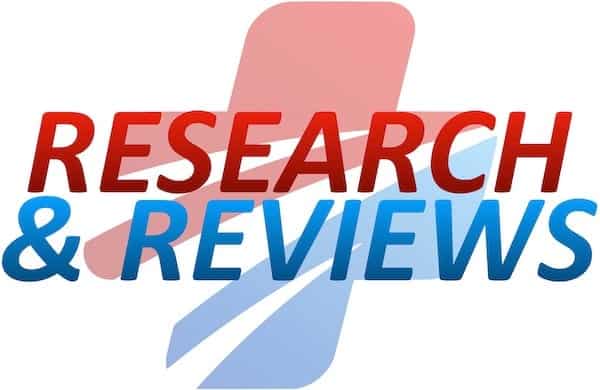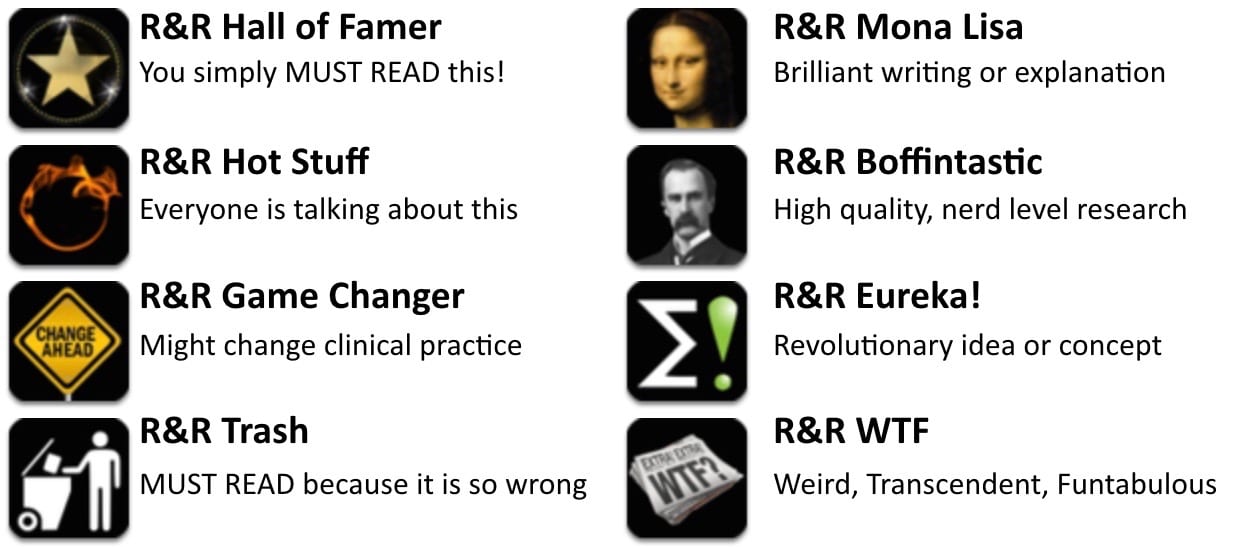R&R In The FASTLANE 023
Welcome to the 23rd edition of Research and Reviews in the Fastlane. R&R in the Fastlane is a free resource that harnesses the power of social media to allow some of the best and brightest emergency medicine and critical care clinicians from all over the world tell us what they think is worth reading from the published literature.
This edition contains 8 recommended reads. The R&R Editorial Team includes Jeremy Fried, Nudrat Rashid, Soren Rudolph, Anand Swaminathan and, of course, Chris Nickson. Find more R&R in the Fastlane reviews in the : Overview; Archives and Contributors
This Edition’s R&R Hall of Famer
Wunsch H. Is there a Starling curve for Intensive Care? Chest. 2012 Jun;141(6):1393-9. Pubmed PMID: 22670019
- A topic constantly being considered, to which there may be no static answer and requires understanding of all the components by all of the stakeholders: the implications of having too few or too many ICU beds… Is there a right number of beds?
- Recommended by Matthew Mac Partlin
Hall AJ. Noroviruses: the perfect human pathogens? J Infect Dis. 2012 Jun;205(11):1622-4. Epub 2012 May 8. PubMed PMID: 22573872.
- When asked to think of the perfect human pathogen, do you think of norovirus? If you don’t, then read this short editorial on the virus that causes half of all cases of gastroenteritis worldwide.
- Recommended by: Chris Nickson
IST-3 collaborative group. The benefits and harms of intravenous thrombolysis with recombinant tissue plasminogen activator within 6 h of acute ischaemic stroke (the third international stroke trial [IST-3]): a randomised controlled trial. Lancet. 2012 Jun 23;379(9834):2352-63. Epub 2012 May 23. Pubmed PMID: 22632908 PMCID: PMC3386495
- IST3 is strictly delusional. Despite negative results, the authors blithely push forward as though it proves their point. More deaths at 7 days in the treated group, same rate of disability at 6 months. What are they smoking?
- Recommended by: Joe Lex
- Editor’s note: This paper has featured in R&R previously — but Joe’s ‘recommendation deemed it necessary to mention this paper again…
Arora S, Swadron SP, Dissanayake V. Evaluating the sensitivity of visual xanthochromia in patients with subarachnoid hemorrhage. J Emerg Med. 2010 Jul;39(1):13-6. Epub 2008 Jun 24. PubMed PMID: 18572349 – [Fulltext]
- It seems ridiculous to me that any hospital would still rely on visual inspection of CSF to determine if xanthochromia is present or absent in trying to rule out subrachnoid haemorrhage. In this study the sensitivity of visual inspection of CSF for detecting xanthochromia was 47.3% (95% confidence interval 24.4-71.1%).
- Recommended by: Chris Nickson
Carman TL, Gegaj F. Management of Pulmonary Embolism: 2010 State-of-the-Art Update. Curr Treat Options Cardiovasc Med. 2010 Apr;12(2):168-84. Pubmed PMID: 20842554
- A comprehensive well organised evidence-based overview of the management options for PE.
- Recommended by: Joe Lex
Smulowitz PB, Honigman L, Landon BE. A Novel Approach to Identifying Targets for Cost Reduction in the Emergency Department. Ann Emerg Med. 2012 Jul 12. [Epub ahead of print] Pubmed PMID: 22795188
- Great Annals piece about potential areas for cost savings (or not) in the ED), and some general overview of payment reform. The punchline: even if we figured out how to stop the URIs from showing up in the ED, it wouldn’t save any money.
- Recommended by: Seth Trueger
Venkatesh AK, Kline JA, Courtney DM, Camargo CA, Plewa MC, Nordenholz KE, Moore CL, Richman PB, Smithline HA, Beam DM, Kabrhel C. Evaluation of pulmonary embolism in the emergency department and consistency with a national quality measure: quantifying the opportunity for improvement. Arch Intern Med. 2012 Jul 9;172(13):1028-32. PMID: 22664742
- “One-third of imaging performed for suspected PE may be categorized as avoidable.” That conclusion alone makes this worth reading.
- Recommended by: Joe Lex
Lipman GS, Kanaan NC, Holck PS, Constance BB, Gertsch JH; PAINS Group. Ibuprofen Prevents Altitude Illness: A Randomized Controlled Trial for Prevention of Altitude Illness With Nonsteroidal Anti-inflammatories. Ann Emerg Med. 2012 Jun;59(6):484-90. Epub 2012 Mar 21. PubMed PMID: 22440488.
- An NNT of 3.9 suggests ibuprofen is as good as acetazolamide and dexamethasone for preventing altitude sickness. Cynics might argue that it’s good for headaches and that’s the main feature of altitude sickness. Nevertheless, a good study with a positive result. The NSAID hangover trial to follow?
- Recommended by: Chris Nickson
Chris is an Intensivist and ECMO specialist at The Alfred ICU, where he is Deputy Director (Education). He is a Clinical Adjunct Associate Professor at Monash University, the Lead for the Clinician Educator Incubator programme, and a CICM First Part Examiner.
He is an internationally recognised Clinician Educator with a passion for helping clinicians learn and for improving the clinical performance of individuals and collectives. He was one of the founders of the FOAM movement (Free Open-Access Medical education) has been recognised for his contributions to education with awards from ANZICS, ANZAHPE, and ACEM.
His one great achievement is being the father of three amazing children.
On Bluesky, he is @precordialthump.bsky.social and on the site that Elon has screwed up, he is @precordialthump.
| INTENSIVE | RAGE | Resuscitology | SMACC







